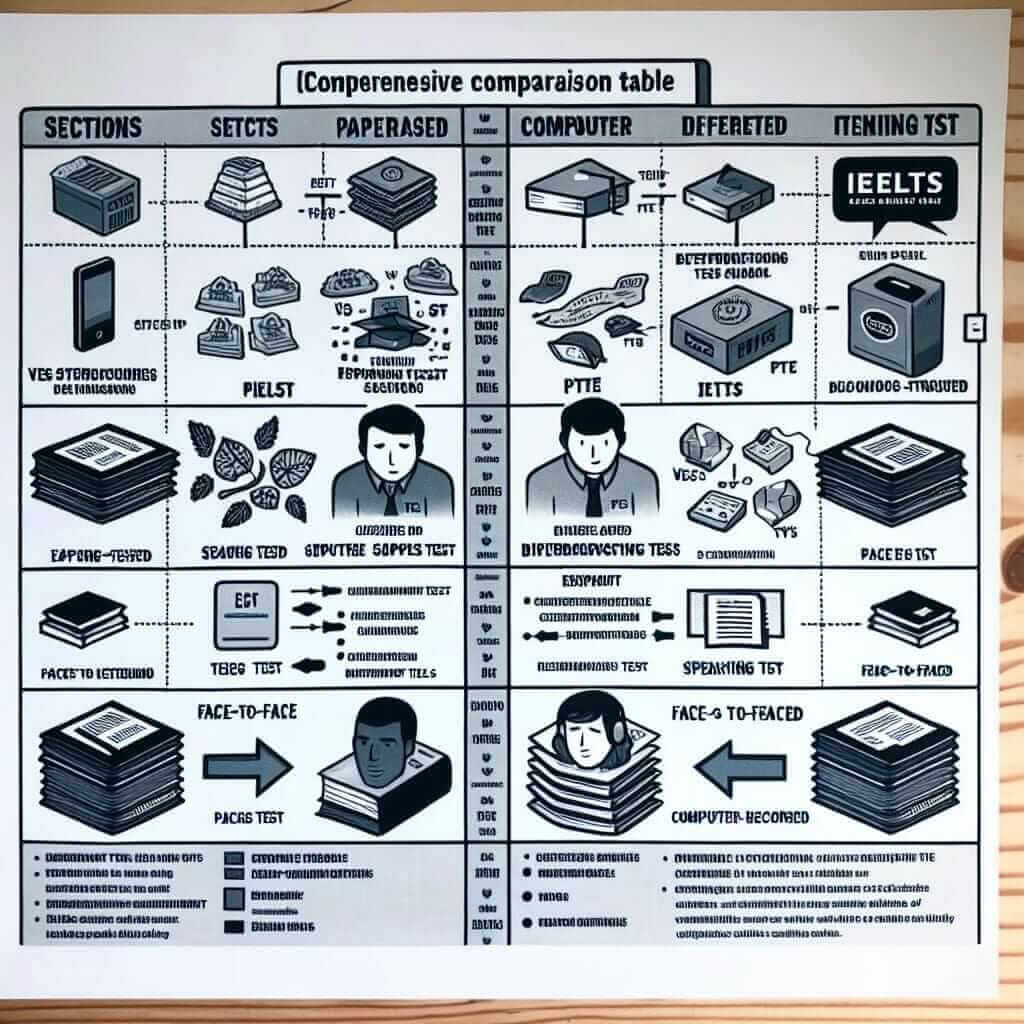As an IELTS instructor with over two decades of experience, I frequently encounter students grappling with the decision of choosing the right English proficiency test. This is particularly true for those aiming to study abroad or immigrate, where both IELTS (International English Language Testing System) and PTE (Pearson Test of English) are widely accepted. This article delves into the key differences between these two tests, equipping you with the knowledge to make an informed choice.
Test Format and Structure
One of the most significant distinctions lies in the format and structure of the exams:
IELTS
- Format: Primarily paper-based, although a computer-delivered option (IELTS on Computer) is available in some locations.
- Sections: Divided into four sections: Listening, Reading, Writing, and Speaking.
- Speaking Test: Conducted face-to-face with a certified IELTS examiner.
PTE
- Format: Entirely computer-based.
- Sections: Divided into three main parts: Speaking & Writing (combined), Reading, and Listening.
- Speaking Test: Responses are recorded and assessed by computer algorithms.

Content and Skills Assessed
While both tests assess your English language proficiency, they do so with slight variations:
IELTS
- Focus: Emphasizes academic English skills, particularly in the Writing and Speaking sections.
- Question Types: A mix of multiple-choice, short-answer, essay writing, note-completion, and diagram labeling, among others.
- Speaking Test: Assesses fluency, vocabulary, grammar, pronunciation, and coherence in a conversational setting.
PTE
- Focus: Covers a wider range of accents and utilizes integrated tasks that combine multiple skills.
- Question Types: Primarily multiple-choice, fill-in-the-blanks, re-order paragraphs, and summarize spoken text.
- Speaking Test: Evaluates your ability to speak clearly and concisely within a given time limit.
Scoring and Results
IELTS
- Scoring: Uses a band score system ranging from 0 to 9 for each section, with an overall band score representing your proficiency level.
- Results: Available within 13 calendar days for the paper-based test and 3-5 days for the computer-delivered test.
PTE
- Scoring: Employs a numerical score ranging from 10 to 90, aligned with the Common European Framework of Reference for Languages (CEFR).
- Results: Usually available within 48 hours of taking the test.
Which Test is Right for You?
The choice between IELTS and PTE depends on your individual strengths, preferences, and the specific requirements of the institutions you are targeting.
Consider PTE if:
- You are comfortable with computers and prefer a fully computerized test.
- You perform well under timed conditions and are adept at multiple-choice questions.
- You need your results quickly.
Consider IELTS if:
- You prefer a more traditional exam format with a face-to-face speaking test.
- You excel in written communication and expressing yourself eloquently.
- You are more comfortable with a wider variety of question types.
Conclusion
Ultimately, the best test for you depends on your individual learning style and strengths. Researching both IELTS and PTE thoroughly and understanding their nuances will guide you towards making the best choice for your academic or immigration goals.